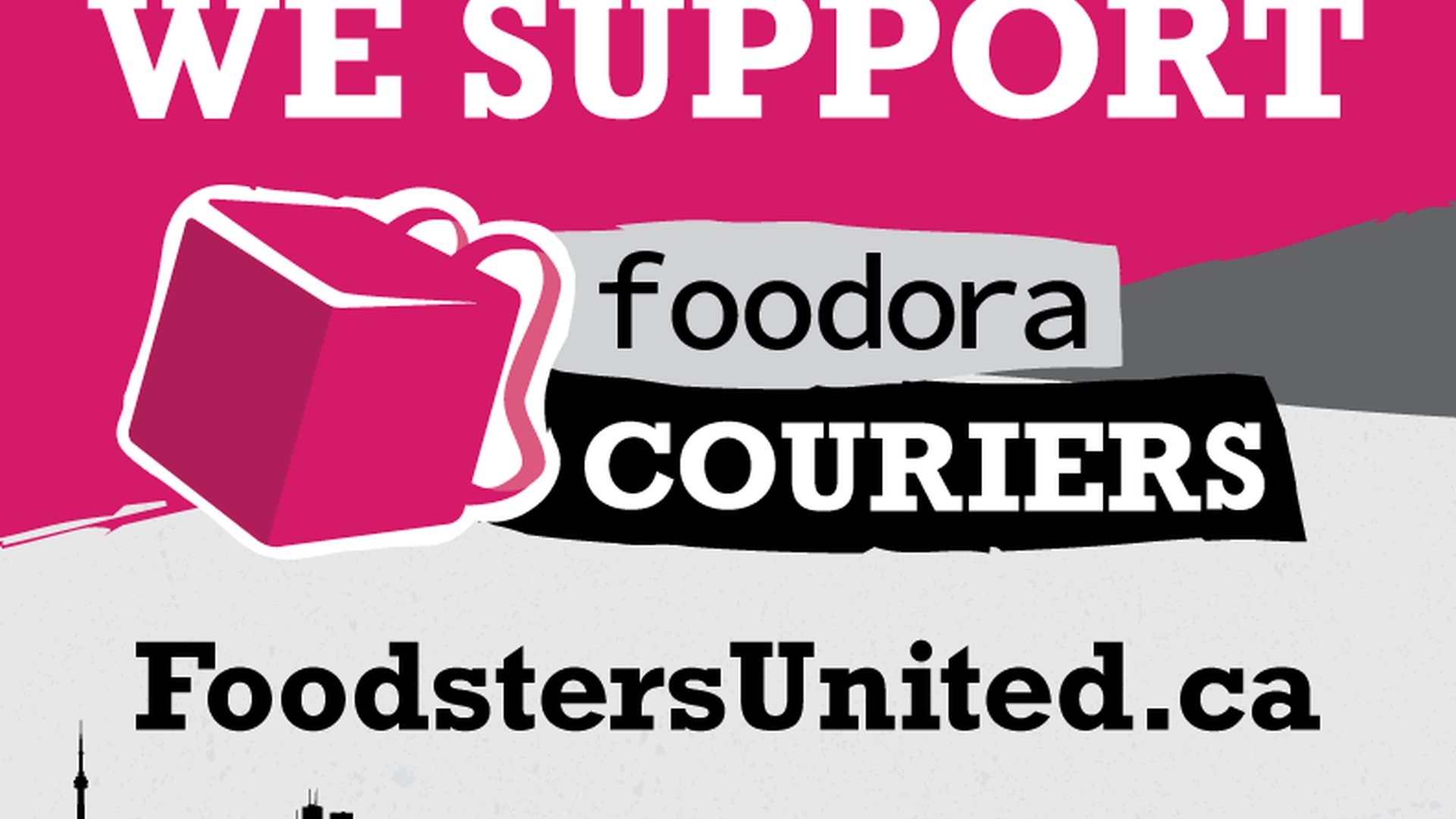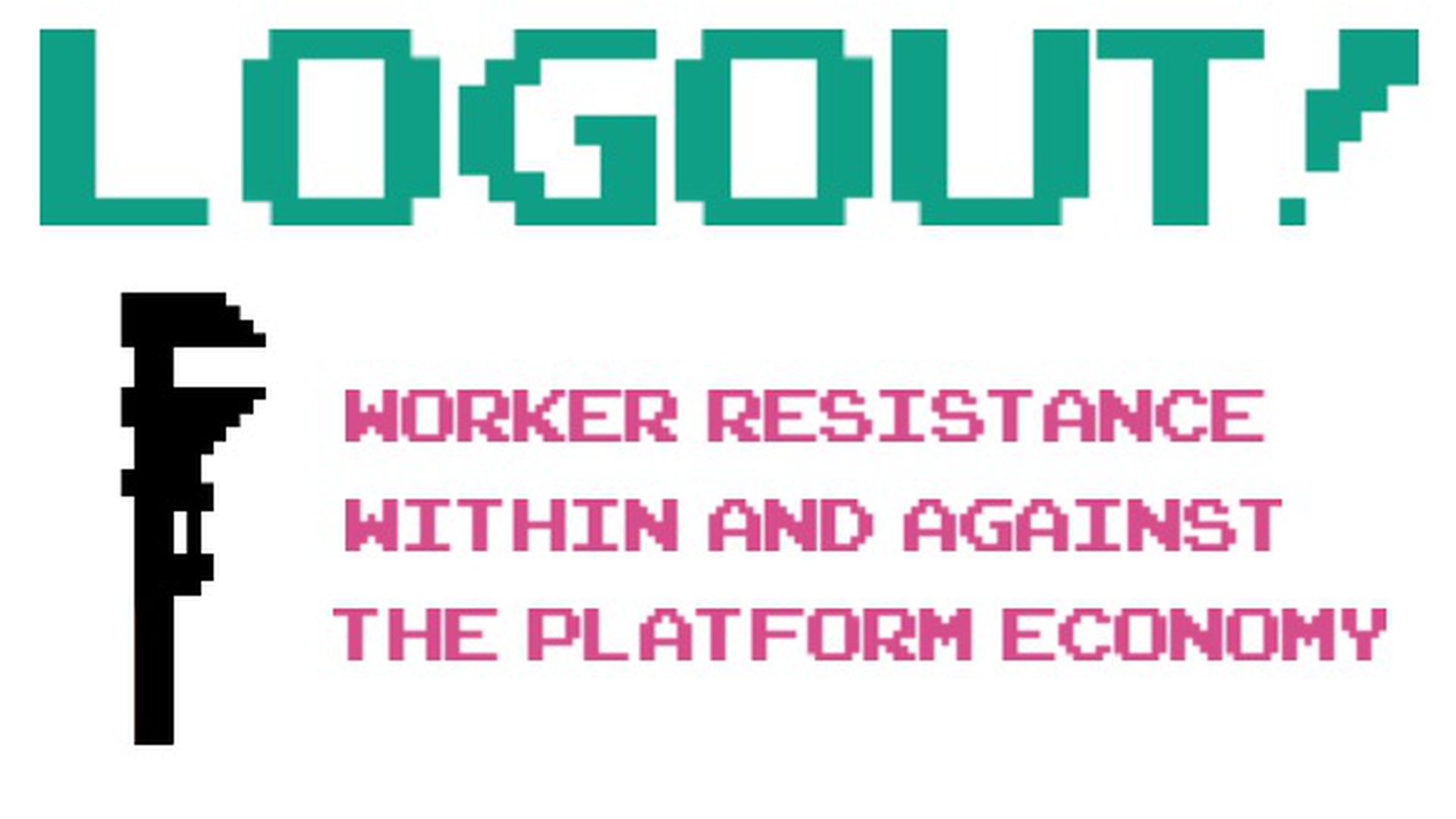On the conditions of possibility for worker organizing in platform-based gig economies

inquiry
On the conditions of possibility for worker organizing in platform-based gig economies
by
Niels van Doorn
/
June 8, 2019
in
Logout!
(#8)
Reflections on Platform Labour
One key challenge shared by labor organizers and researchers of platform-based gig work is recruitment. How do you study and/or organize workers who mostly operate in isolation, who are not always visible, and who frequently lack a strong attachment to a collectively crafted professional identity, let alone a social class? These are certainly not the easiest people to find and to mobilize. However, many gig workers are already one step ahead and have taken it upon themselves to organize and let their voice be heard.
Over the past few years, Uber drivers in different cities across the globe have protested against unfair working conditions and rate cuts. Similarly, food delivery workers in Europe have attracted significant public exposure for taking delivery platforms like Deliveroo and Foodora to task for their malpractices. Workers have been able to leverage existing communication infrastructure, such as a company-initiated Telegram chat group (in the case of Deliveroo in the Netherlands), to begin organizing. This combines with the generative possibilities of meeting in public spaces during work time, through which these couriers have forged grassroots and improvised modes of resistance. These did not only capture the media’s attention, but also spurred unions and other labor organizations (like the FNV in the Netherlands and IWGB in the UK) to take a serious interest in a category of workers many previously considered to be by and large ‘unorganizable’.
In September 2017, I was looking for gig workers who were willing to participate in the Reshaping Work conference. It proved to be relatively easy to recruit Deliveroo couriers who had then recently joined the Riders Union. However, it was much more difficult to find cleaners working through Helpling, a platform for domestic cleaning and handyman services that operates in nine countries worldwide.
In contrast to the visible militancy of the predominantly young and male delivery workers, Helpling cleaners were conspicuously absent in spaces of labor organizing as well as in public debates about on-demand gig work (on this last absence, see this piece by Julia Ticona and Alexandra Mateescu). While I was doing research in New York City, I found that food delivery workers operating for companies like Postmates, Caviar, and Uber Eats were much less willing and able to organize against their increasingly tough working conditions. This left me with a question that I would like to reflect on here: what are the possibilities for worker organizing in platform-based gig economies?
How should we study gig work?
Allow me to make a point that may seem obvious but which is nonetheless frequently discarded in the bulk of hot takes on the future of work: there is no such thing as “the gig economy”. We need a more differentiated approach to studying platform-based gig work that focuses on particular economies (plural), markets, and/or industries which platforms have sought to “disrupt”, while taking into account a number of factors that co-determine how/to what extent gig workers in each industry will be able and willing to organize. I believe the following factors need to be considered by researchers, labor organizers and policymakers alike, as they seek to grasp and improve the conditions of gig work in its multiple forms.
What is the nature of the work performed?
For example, whereas food delivery work takes place in public spaces and is highly visible, domestic cleaning takes place in private homes, away from the public eye. The barrier to public protest will therefore be lower for couriers, who are “at home” in the streets (where they are already visible to each other and the public at large), compared to cleaners who operate in a more isolated workplace. Moreover, while food delivery workers usually have very little engagement with customers or restaurants, domestic cleaners often develop a more extensive relationship with their repeat clients, whose homes form intimate workplaces where their work is monitored and evaluated by the client more than by an algorithm.
In other words, food delivery work produces a much more fungible, or interchangeable, service compared to domestic cleaning. This is likely to affect the the extent to which either type of gig worker is willing and able to protest her/his conditions and organize for change: if you decide to strike, who will be negatively affected by this action? As a cleaner, you may be hesitant to let down a client with whom you have built up a professional and personal relationship, and whose household depends on you. The client may also decide to cancel all future cleanings as a response to your absence, which means that you lose a source of income and will have to find another regular client (if the platform has not deactivated you).
What is the social situation and legal status of the worker?
When assessing the extent to which gig workers are willing and able to organize or protest their conditions, it is also important to expand our view beyond the immediate sphere work to include a worker’s social/domestic situation as well as their legal status. To focus on the latter, undocumented workers will rightfully be much more reluctant to join protests or organize against their employer, for fear of retaliation.
In New York City, food delivery has traditionally been a highly informal and unregulated sector of the city’s economy where the work is done by (mostly Chinese and Latin American) immigrant men, many of them undocumented and laboring under hyper-precarious conditions. As food delivery platforms entered this space, I found that undocumented workers in NYC have recently also started to experiment with this new form of gig work, even though they are technically not allowed on the platform without a social security number and a background check.
While most undocumented couriers continue to work directly for restaurants, the distinction between traditionally organized and platform-orchestrated food delivery is becoming more blurred, generating a need to think creatively about how undocumented workers can be safely and responsibly included in struggles for better platform-based work. Worker centers and community-based organizations such as Make the Road will play a vital role moving forward.
What is the worker’s relationship to/investment in the work?
Gig work is often presented as a good way to earn some supplemental income, but I have met many people who have turned – or are trying to turn – ride-hailing, (food) delivery, cleaning and other kinds of platform-based work into a “full time” occupation. The measure of time and capital invested in gig work, and thus the level of dependency on this work as a source of income, will greatly affect the extent to which a gig worker is prepared to fight for better labor conditions.
In New York City, couriers whose livelihood depends on food delivery expressed relatively more interest in labor organizing than those who had a more casual relationship to this work. In contrast, the “full time” cleaners who offer their services through Handy and/or TaskRabbit were generally much less interested in labor organizing. Instead of understanding themselves as belonging to a class of workers, they were much more likely to adopt an entrepreneurial perspective in which they embrace their independent contractor status, sometimes aspiring to start their own cleaning company. Handy, for them, is primarily a lead generator serving them clients whose business may potentially be taken off the platform. This illustrates how professional self-identification shapes one’s relation to the work at hand, which in turn affects one’s inclination to collectivize.
How fragmented is the labor relationship and daily work experience?
To be sure, when the food delivery workers I interviewed in NYC told me they worked “full time” – meaning at least 40 hours but often a lot more – this did not mean that they worked with one company, using only a single app. They usually operated through multiple platforms, with three or four apps on their phone that they alternated between on a daily basis: when one app was “slow”, they tried other ones in an effort to reach their daily income targets and thereby cobble together a living. There were simply too many couriers out there to trust any single company to give them enough orders and this problem was getting worse.
This situation is not just worrisome in itself, it also impacts couriers’ ability to protest their deteriorating wages. Because their daily work experience is so fragmented, it complicates the question of who, exactly, is the “employer” that should be protested/bargained with. This, in turn, highlights the importance of industry-level actions and solutions, even as this industry is still in its relative infancy and shared norms, standards, and expectations concerning delivery worker’s rights and protections are scarce at this point.
How is the labor managed?
Each platform company governs its workforce in a particular – app-based, data-intensive – way, gradually developing its own take on what has been termed “algorithmic management”. Decisions made during this process depend to a large extent on the previously discussed nature of the work that has to be managed. Moreover, these decisions materialize as various control and evaluation protocols aimed at optimizing the labor process with respect to quality and productivity.
Here I’d like to briefly highlight one such optimization technique, namely the use of incentives that segment and gamify the work of food delivery. In doing so, I aim to illustrate how this technique exacerbates a central problem facing labor organizers in the platform-mediated gig economy: the difficulty of determining and fighting/bargaining for a “fair wage”. Incentive schemes, like Uber’s Promotions or Caviar’s Milestones, offers “delivery partners” windows of opportunity during which they can work towards particular goals that, when reached, unlock a temporary income guarantee or a bonus payment. These incentives are not always available to all partners and, with the performance and behavioral data that companies generate, can potentially be structured differently depending on who receives them. In this way, they create a segmented labor market where – depending on criteria that remain unknown to delivery partners – one group of couriers can take home substantially higher wages than another group, even though they are basically doing the same work (albeit in a different area and within a different time frame).
This consequently generates an unequal and competitive system of winners and losers where some couriers are celebrated as kings of “the hustle” while others either aspire to be like them or become disgruntled when they fail to meet “the rules of the game”. Moreover, incentive schemes contribute to a more general trend in the platform economy, namely the proliferation of variable, personalized, and contingent wages. One central task for labor organizers and policymakers will thus be to remain committed to the idea of a fair wage as a fundamental right, while also rethinking what this looks like in the context of platform-mediated labor and establishing new ways to achieve its enforcement.
The long shadow cast over platform-mediated gig work
Finally, the socio-historical position of particular industries and their workforces should also be taken into account as an overarching factor, as it compounds the previously discussed factors and affects the level of public interest in, and support for, labor struggles. One important reason for the success of many food delivery and cleaning platforms is precisely that they entered – and thereby selectively formalized – traditionally informal and poorly regulated sectors. We should remember that these sectors have always relied on the precarious labor of marginalized, increasingly immigrant men and women who service households by delivering their food or cleaning their homes. In other words, long before the market entry of these platforms, food delivery and domestic cleaning were already devalued and as a result these deeply classed, gendered, and racialized forms of “menial” labor were excluded from many protections and rights bestowed on other, more respectable (i.e. white working and middle class) kinds of work. One of the main questions I therefore aim to answer in my own research is to what extent –and how – platform companies operating in these low-wage service industries perpetuate, intensify, and/or counter these existing inequalities, while perhaps also creating new forms of inequality.
I believe that the technical capacities of digital platforms could potentially grant them a positive and empowering role in the lives of workers, many of whom have never experienced the privilege of secure employment with a firm that pays a living wage and provides the benefits and protections many of us rightfully feel entitled to. Yet, I also think it is clear that today’s venture-backed platform companies are not making good on this potential, if not actually operating to diminish it. The urgent question then becomes: who will step up to organize and hold them accountable?
Featured in Logout! (#8)
author
Niels van Doorn
Subscribe to Notes from Below
Subscribe now to Notes from Below, and get our print issues sent to your front door three times a year. For every subscriber, we’re also able to print a load of free copies to hand out in workplaces, neighbourhoods, prisons and picket lines. Can you subscribe now and support us in spreading Marxist ideas in the workplace?
Read next

The end of the beginning
by
Callum Cant,
Jamie Woodcock
/
June 8, 2019

